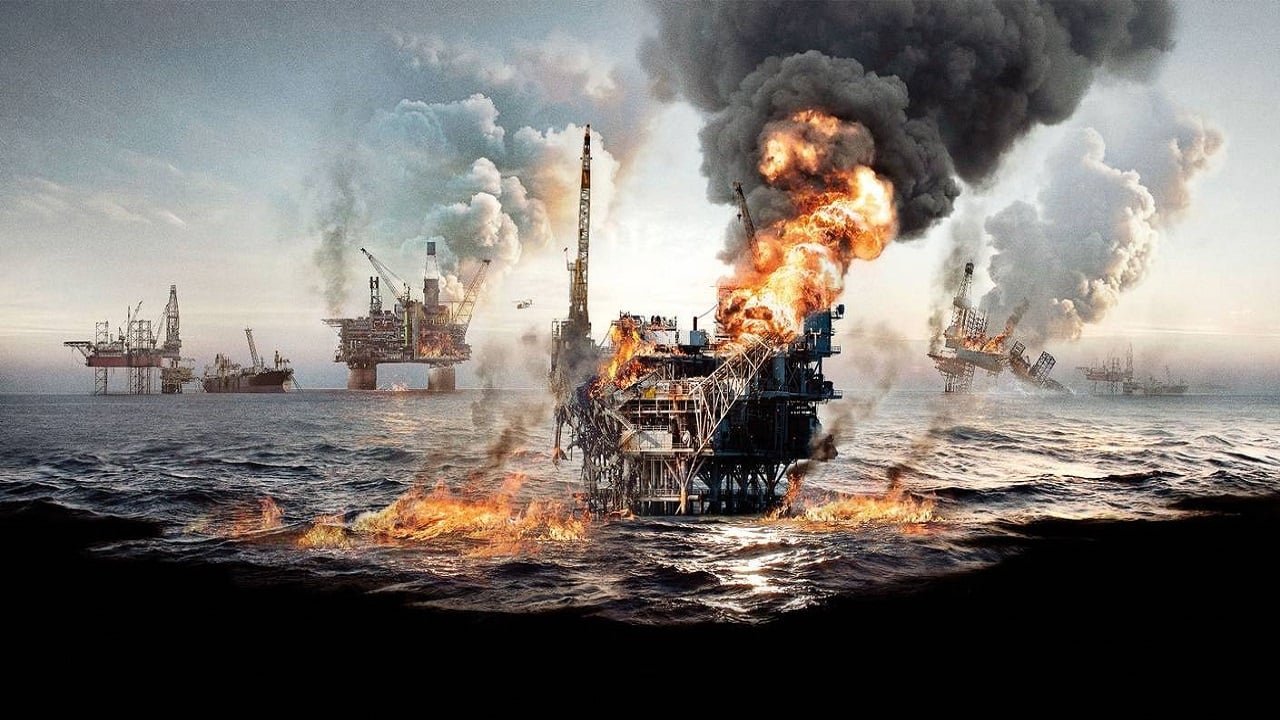The Burning Sea
MAGNOLIANorwegian disaster features have been the country's cinematic corpus in the last decade: The Tunnel, The Wave, and now The Burning Sea. Each feature follows a group that inadvertently comes into the narrative of a natural disaster that wreaks havoc and casualties, with the characters present having to work together to survive. Nothing is new in terms of narrative and convention, of course, with disaster flicks doing sizeable numbers in the US with classics, more often than not crafted by Roland Emmerich, such as Independence Day, The Day After Tomorrow, Knowing and so on. The difference, however, specifically in John Andreas Andersen’s The Burning Sea, is that it crafts a human antagonist of economic greed that tears apart human morality and compassion; this, at odds with the disaster itself, places The Burning Sea in a unique territory with this sub-genre. The final product is a thrilling, poignant, and often haunting feature.
The result on screen feels just that: weighted. The character arcs alone have substance to immerse and influence the audience with emotional turmoil and desperation, but these are evident manipulations that manifest themselves in the very basic stories of turmoil. It is what further elevates and drives the characters into the hearts and minds of the audience that has true lasting merit. The Burning Sea, on that front, does an adequate job of placing the home life and workplace camaraderie as further emotional immersion for the disaster. The audience sees the love, passion and bond that glues the relationship of husband and wife in Henrik Bjelland and Kristine Kujath Thorp or Kristine Kujath Thorp with Rolf Kristian Larsen that later substantiate deeper and meaningful life or death situations that later transpire, all the while creating a dissonance between the bland corporate hierarchy that are making life or death situations on economic, monetary value. Again, this isn't particularly new or inventive and is shown in more of a niche comedic creation in the likes of Adam McKay's Don't Look Up, or in any feature that uses a governmental character. Nevertheless, the writing here and more foreboding nature is that the hope and peril don't belong in the hands of governmental authority, but it is the lifeblood of action and determination from the people that crafts a thrilling clash of dynamics.
That being said, as compelling and engaging as the characters and story are, the special effects and set-pieces ultimately define features like The Burning Sea, and surprisingly, they are used effectively in a manner of subtlety. Granted, that might sound oxymoronic, but Andersen chooses to use these moments of spectacle to a limited albeit still effective degree of screen time. The result allows writers Lars Gudmestad and Harald Rosenløw-Eeg to focus on character; whether it be reaction or action to the events that unfold, the feature consistently puts its character at the centre of attention. This only works if the character development is worthy of its own merit, and with the performance of Kristine Kujath Thorp, who puts forward a rollercoaster ride of emotional depth, specifically with her son, the screen is always lastingly engaging with whatever is shown, be it regarding the personal or pyrotechnics displayed.
Alas, at one hour and forty minutes, the feature leaves a sizeable amount of tension and atmosphere out of the picture. Within the context of this event occurring and the time frame limited at best, the feature does control the tension quite well, or more so, the vulnerability of the events occurring events. There are moments in which the director and cinematographer do choose to engage in the personal and missed chances to craft further maddening and thrilling tension with the set pieces that are instead instructed to be a looming threat instead of the mortal danger of being in the present. This is changed, however, in one scene in the film's climax but comes too little too late for an effective influence, specifically with its sound design – which is a major missed opportunity to control the sequences on screen and, therefore the impact upon its audience. This is equally as frustrating when the feature mainly demonstrates diegetic sounds in the accompanying score – an element that goes underused and amiss with how effective and galvanising such an attribute has in the wake of power.
For the most part, and for audiences beaten with the nationalism agenda of the disaster feature, The Burning Sea is an effective and engaging thriller that is powered with equally as effective performances in a feature uses its set pieces in a subtle but impending manner. But while it does not quite nail the tension and moments of peril, and could even be argued that the film itself is too short for its own good, it does craft an engrossing and atmospheric ride with a poignant and damning statement on governmental approach and authority.


